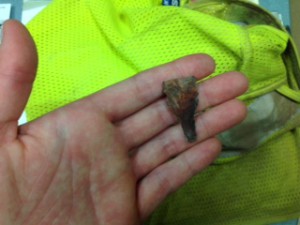Let me begin by addressing the students of the Applied Archaeology program – don’t let anyone scare you out of Dr. Phil’s seminar. Because it rules. The class is theory-heavy, but the first day of class involved discussion of tall, tongue-rolling, Vulcans. Just sayin.
For my next trick, I will clarify some confusing archaeological typology terms using heavy metal music.
As I struggle once more through the fiery depths of archaeological theory in Dr. Phil’s seminar – the metal gods shine light upon dense articles by Brew, Steward and Setzler, McKern, Krieger, Willey and Phillips, Ford, Spaulding, and Binford. If you’ve been forced to familiarize yourself with these names before, grisly images of death and destruction may come to mind as well as the great typology debate – fought across peer-reviewed journal lines. A long winded battle, where “the screams of anguished authors who fear[ed] that their brain children [were] being murdered by reviewers” could be heard ringing through the notes and comments of American Antiquity and American Anthropologist in the early 1950s (Ford 1954).
As we stage dive into the history of typology in archaeology, and before you start banging your head against your desk – I know, theory can be brutal. But Willey and Phillips actually started to make sense to me after I applied the terminology to heavy metal typology. And it offered some real life advice: define your freaking terminology, people. Clearly.
Maybe this is TMI, but this past week as I was wading through the OkCupid dating scene – the old typology debate popped back into my head. (Yup, this is how my brain works…) More specifically, the advice that Willey and Phillips so wordily conveyed about the importance of defining your freaking terminology. I had many-a-conversation with dungeon masters and metal-heads alike over what metal bands they prefer over others.
Now, I am the first one to admit – I suck at metal typology. Going into this – I had no idea where hair metal stopped and thrash metal began. And I figured out why this is so confusing. Nobody knows what the heck they are talking about. And when one person says ‘black metal’ the other person has a completely different idea of what that means. One man’s death-doom is another man’s stoner-metal. Not one of these people, including myself could define the attributes of any one sub-genre of heavy metal. This made for very confusing conversation.
So I looked to the nerds of Wikipedia – because only they would devote so much time to writing the specific attributes of heavy metal sub-genres. (Ian Christe, Robert Walser, Garry Sharpe-Young, and Paul Du Noyer are some folks who have written about the evolution of metal and other genres of music.)
This is what I came up with (CLICK TO ENLARGE!):
The chart describes types of heavy metal, complete with the attributes that define those types, and a few examples of those types. For instance, thrash can be distinguished by overall aggression, fast percussive beats, low register guitar riffs, and overlaid shredding – think Slayer and Megadeth. (Hahahaha – ‘overlaid shredding’ is a great attribute!)
Willey and Phillips’ discussions from their book, Method and Theory in Archaeology use the term ‘archaeology units’ instead of the word ‘type’ in an effort to keep definitions clear (Willey and Phillips 1958). Some of these terms are still used today and with similar meaning. So lets look at this in terms of our ‘metal units’ laid out in the above chart. According to Willey and Phillips’ terminology, our metal units would be considered traditions. Traditions are found across time, with a persistent configuration of technology, where specific elements are continuous. Where some attributes are shared among the separate units, they contrast enough to be separate entities and some occur at slightly later periods in time than others. So the traditions of heavy metal from the chart include hair metal, thrash, power metal, death metal, black metal, doom, and stoner metal. Stemming from the tradition of thrash, death metal emerges. The tradition of death metal is exemplified by heavy distortion, low tuned guitars, minor keys, key and time changes, and deep growling vocals. (These attributes are hilarious.)
This distinction of metal music is in contrast with the concept of the horizon. Horizons spread across space rapidly and are temporally similar – meaning they appear only in a short period of time and then disappear. This could be better likened to dance crazes as Dr. Phil so eloquently described and then nimbly demonstrated by doing ‘The Freddy.’ Look it up. Other examples include such favorites as The Watusi, The Electric Slide, and The Macarena. Points to you if you know all three.
So there you have it – archaeological theory applied to metal typology. I think this means I win. Maybe next week we can discuss the phases and sub-phases of prog rock and fusion.
PS
Keep your eyes peeled for the new archaeology department T-shirts, designed by yours truly. I’ll be ordering those at some point in February. Also – if there is want for repeats of last years T-Shirt, let me know. I need to order at least 10 for a reprint.
Metal Munsells:
Dude’s hair from Iron Maiden album, Killers: 5Y 7/8
Blood from Cannibal Corpse album, Butchered at Birth: 10R 4/8
Background of Witchcraft album, The Alchemist: 5Y 8/2
References Cited
Ford, James A.
1954 ‘Letter, “Spaulding’s Review of Ford,” American Anthropologist 56:109-112.
Willey, Gordon R, Philip Phillips
1958 Method and Theory in American Archaeology. University of Chicago Press, Chicago.


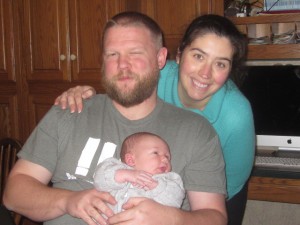


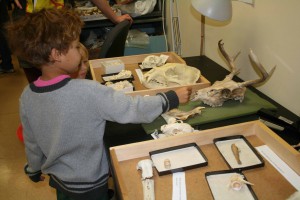
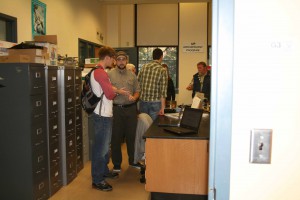
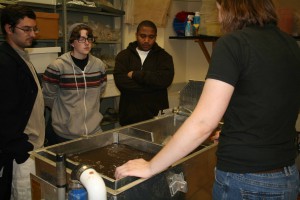

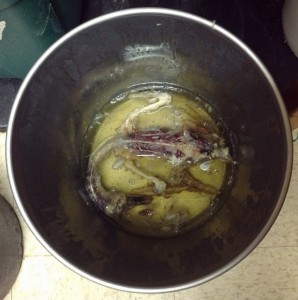

![IMG_1784[1]](https://iblog.iup.edu/trowelsandtribulations/files/2014/09/IMG_17841-1x6g8yc-300x200.jpg)


